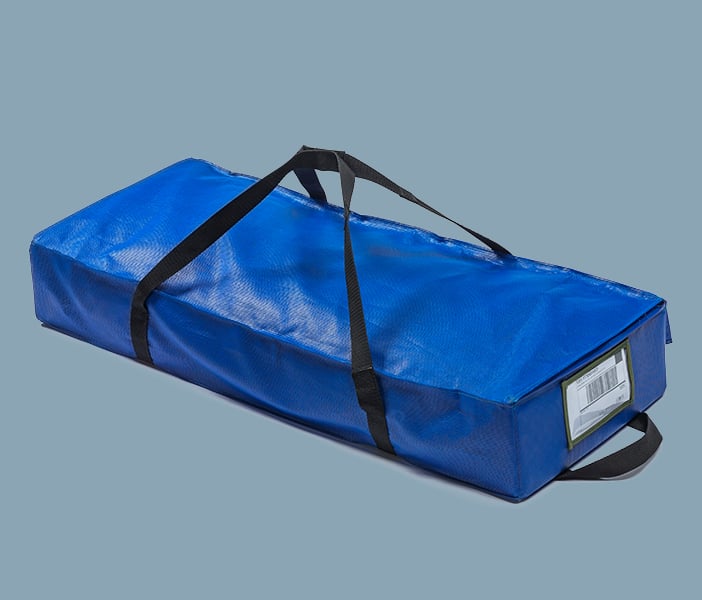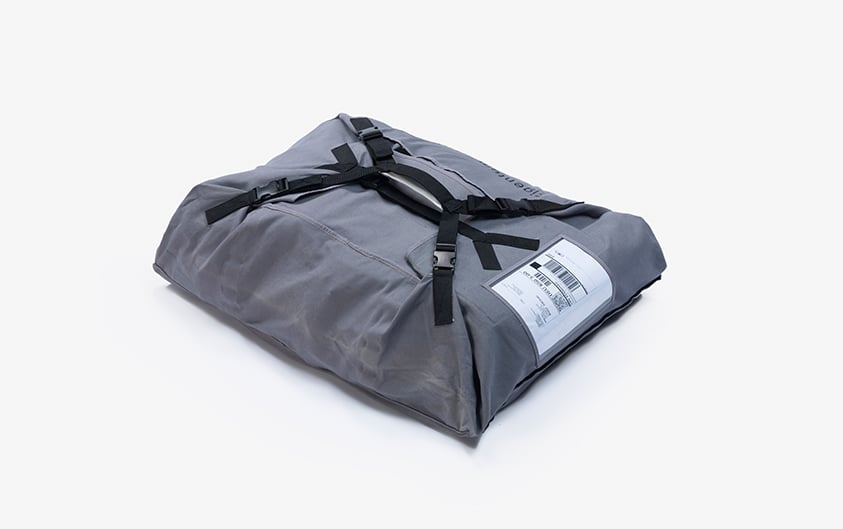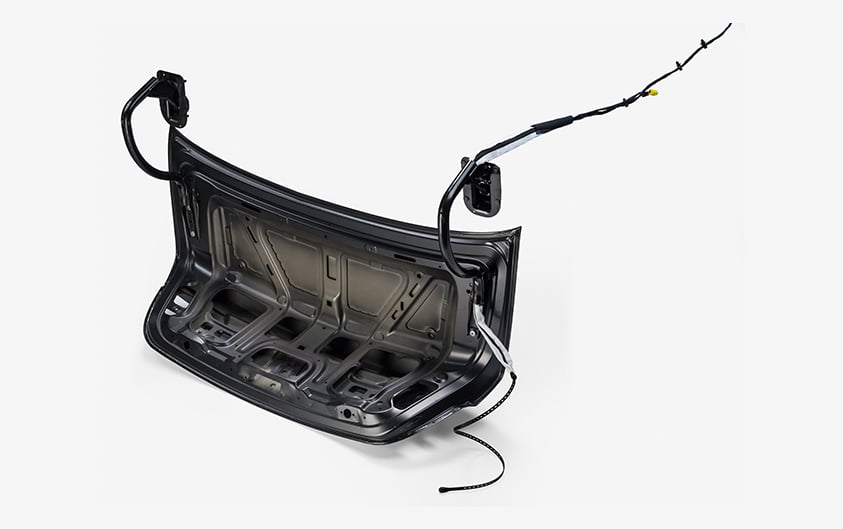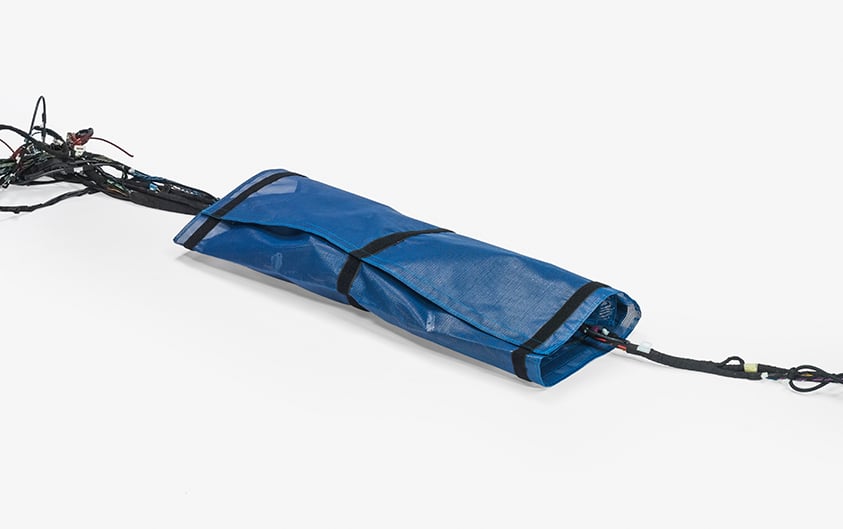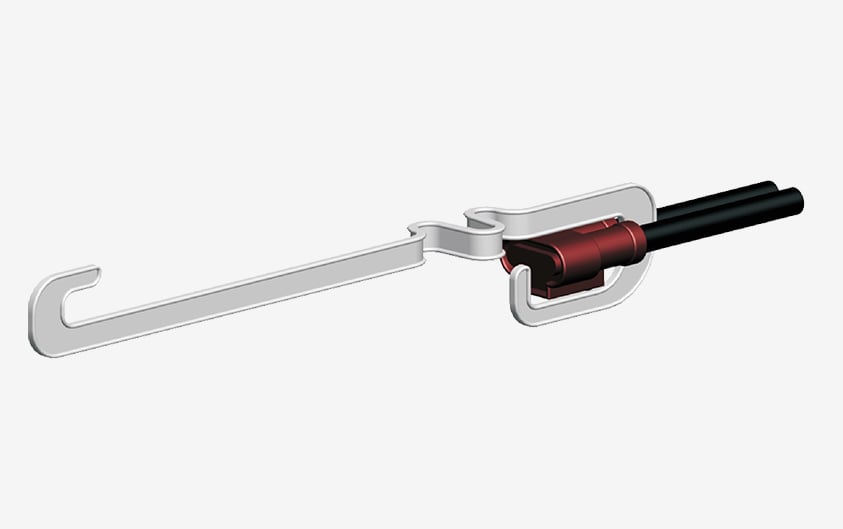Packaging and assembly systems for harnesses
In the past 20 years, we played a leading role in further developing packaging and assembly systems for harnesses. Unlike non-reusable packaging material, our solutions can be used several times to significantly reduce costs and resources.
These systems offer the following: simple packaging of the harness at the manufacturer’s plant, most efficient packing density in one transport box, optimal space utilisation per truck ideal transport protection, seamless storage in a sequence store, easy transport to the assembly line, insertion of the harnesses into the car body, error-free assignment of the individual main harness branches to the respective connecting location and routing of the individual cables to the appropriate electrical consumer.

